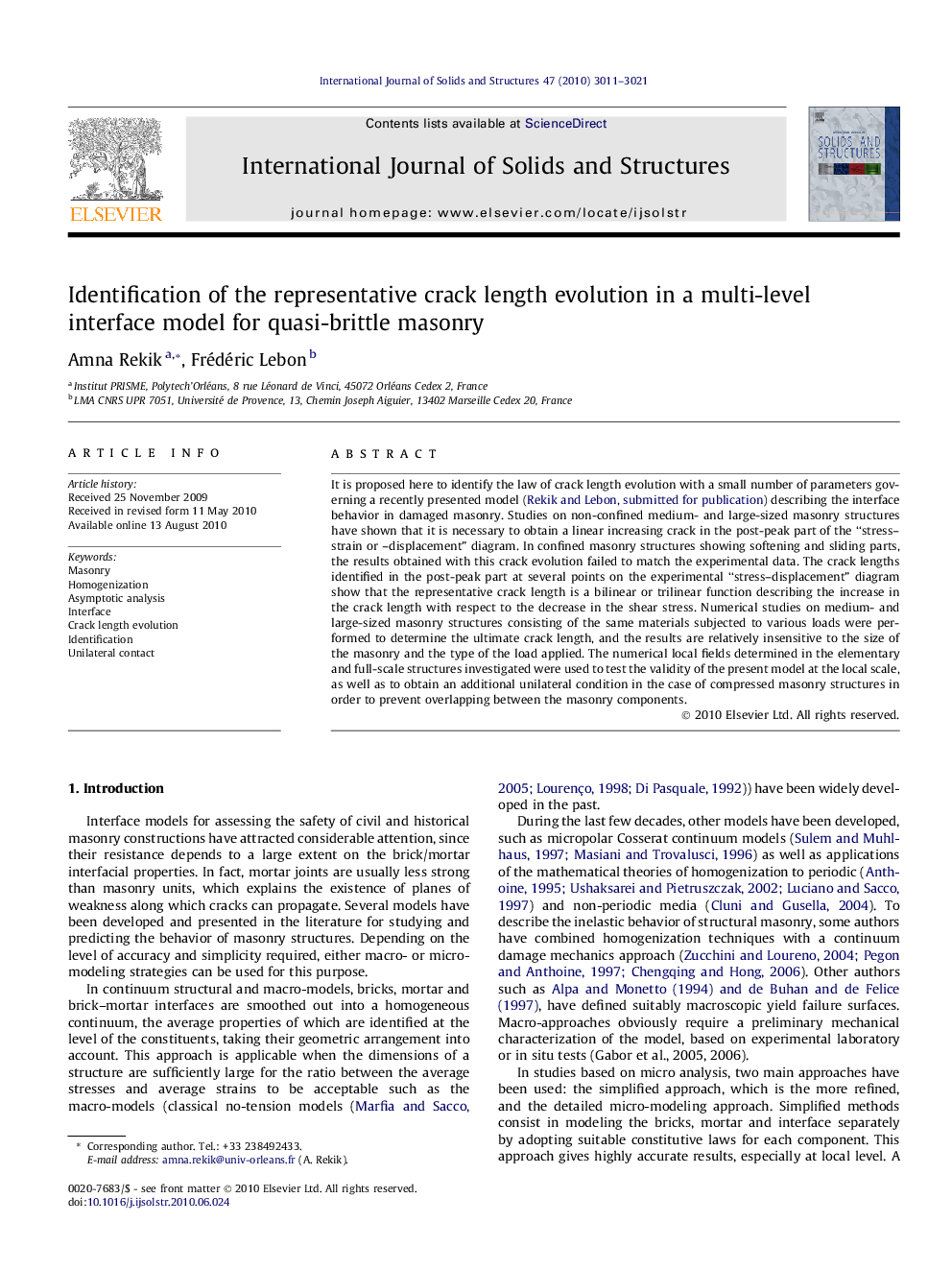| Article ID | Journal | Published Year | Pages | File Type |
|---|---|---|---|---|
| 278907 | International Journal of Solids and Structures | 2010 | 11 Pages |
It is proposed here to identify the law of crack length evolution with a small number of parameters governing a recently presented model (Rekik and Lebon, submitted for publication) describing the interface behavior in damaged masonry. Studies on non-confined medium- and large-sized masonry structures have shown that it is necessary to obtain a linear increasing crack in the post-peak part of the “stress–strain or –displacement” diagram. In confined masonry structures showing softening and sliding parts, the results obtained with this crack evolution failed to match the experimental data. The crack lengths identified in the post-peak part at several points on the experimental “stress–displacement” diagram show that the representative crack length is a bilinear or trilinear function describing the increase in the crack length with respect to the decrease in the shear stress. Numerical studies on medium- and large-sized masonry structures consisting of the same materials subjected to various loads were performed to determine the ultimate crack length, and the results are relatively insensitive to the size of the masonry and the type of the load applied. The numerical local fields determined in the elementary and full-scale structures investigated were used to test the validity of the present model at the local scale, as well as to obtain an additional unilateral condition in the case of compressed masonry structures in order to prevent overlapping between the masonry components.
